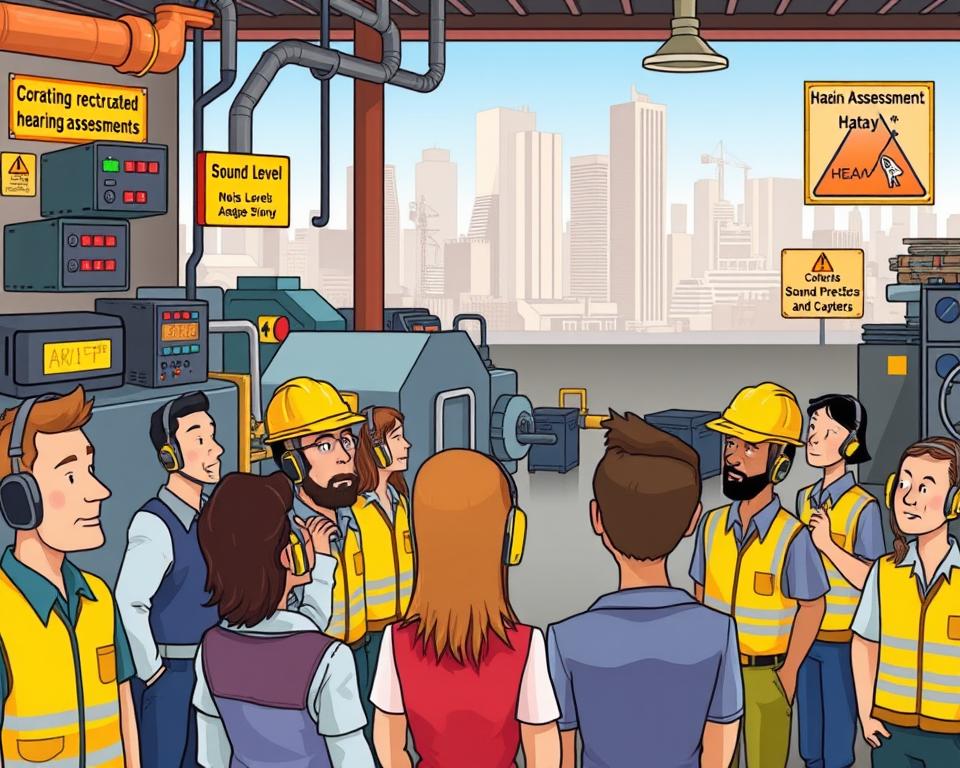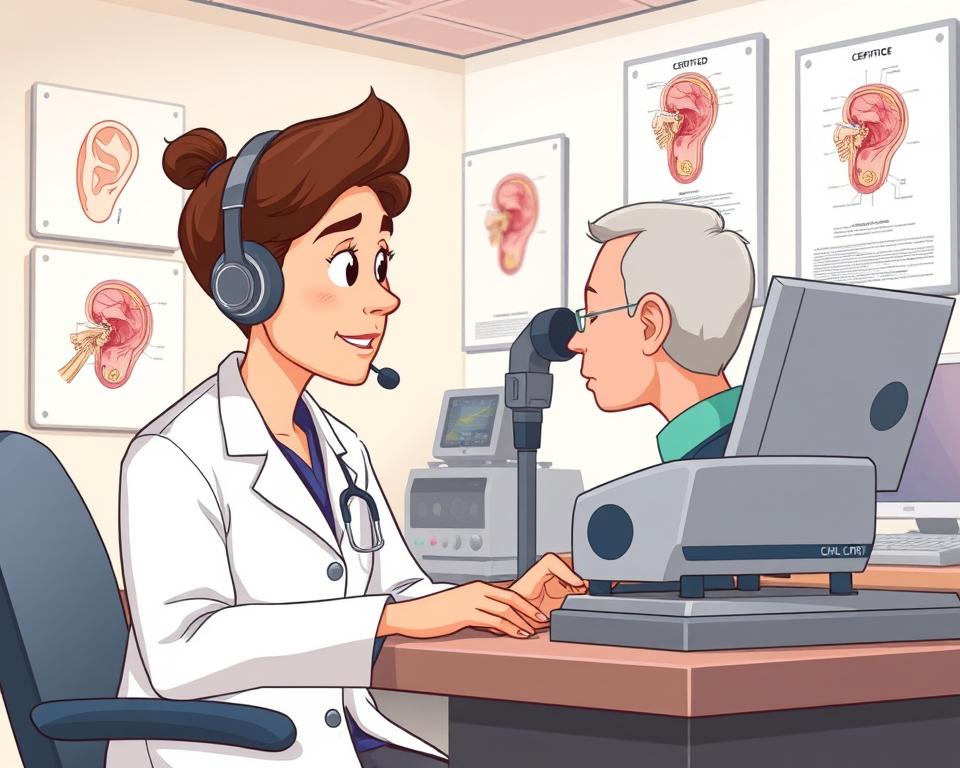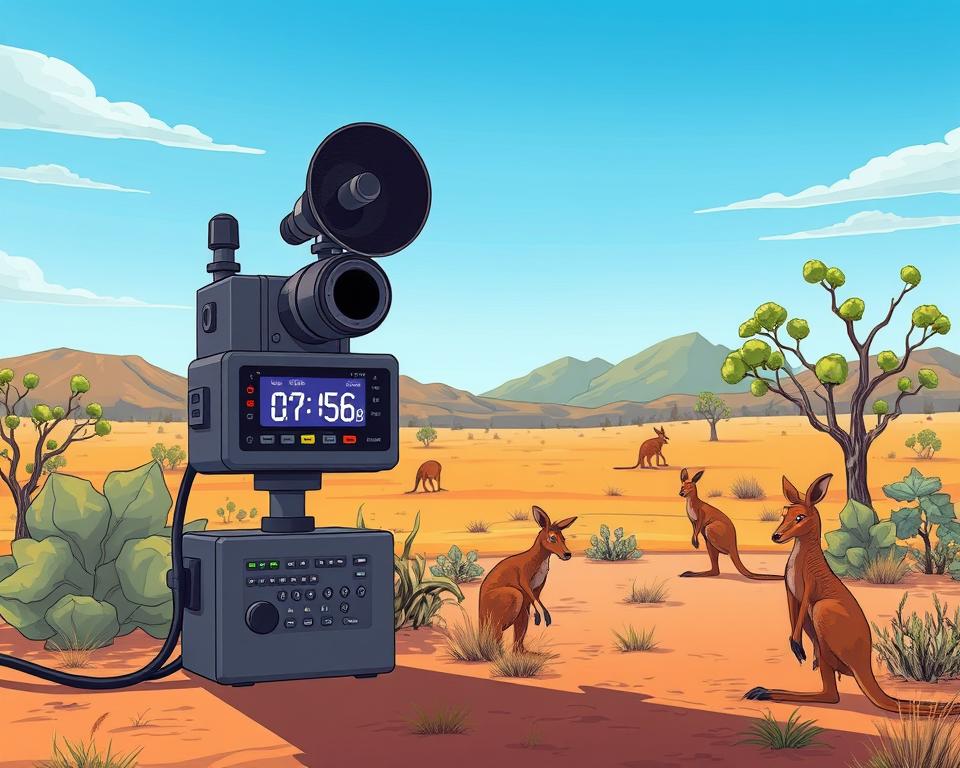In Australia, the hum of industry is omnipresent, but so too is the growing concern for hearing health protection in workplace safety. With new mandates on the horizon, particularly the New Clause 58 – Audiometric Testing under the Work Health and Safety (WHS) Regulation 2017 set to commence on 1 January 2024 in New South Wales, businesses face an increased responsibility. But what does this mean for the average worker faced with the daily blare of industrial din?
The importance of regular hearing assessments and noise level monitoring is coming sharply into focus. These regulations are not just red tape; they represent a pivotal shift towards prioritizing the auditory health of Australia’s workforce. Noise levels averaging 85 decibels over an 8-hour shift have long been the national standard; however, the reality of occupational noise can exceed this, putting workers at risk of noise-induced hearing loss (NIHL), a preventable workplace injury.
Regular audiometric testing, which has to be conducted within three months of an employee’s commencement and biennially thereafter, is at the heart of these efforts in Australia. But this isn’t just a matter of compliance; it’s a critical component of hearing health protection, a means to detect early signs of hearing loss and a maturing understanding that the health of employees significantly impacts productivity and workplace safety.
How often do we consider that beyond the ambient noise, the lingering reverberations have far-reaching consequences? This regulation is compelling businesses to not only reassess their noise control measures but also to confront the reality of NIHL. It’s a clarion call to action, and as the clock ticks down to 2024, one wonders how prepared they really are. The cost of silence on this issue? It might just be measurable in the perishing whispers of one’s hearing.
Understanding the Importance of Regular Hearing Assessments for Australian Workers
Employers across Australia recognise the critical need for maintaining occupational health and safety standards, particularly concerning workplace noise management. Regular hearing assessments not only uphold health and safety compliance but also play a pivotal role in preventing potential noise-induced hearing loss (NIHL), a significant occupational risk for Australian workers frequently exposed to high decibel environments.
In Australia, strict regulations mandate regular hearing assessments to monitor the auditory health of employees, guided by a framework that includes baseline audiometry—an essential component in detecting early signs of NIHL. Ensuring timely intervention and adherence to auditory health precautions significantly mitigates risks associated with prolonged exposure to occupational noise.
The Risks of Occupational Noise Exposure
Occupational noise stands as a formidable challenge within various industrial sectors. Exceeding the exposure standard for noise, set at LAeq,8h of 85 dB(A) or an LC,peak of 140 dB(C), can precipitate a range of health issues from tinnitus and hearing loss to psychological and physiological stress. Implementing systematic noise assessments, a practice reinforced by organisations like Spire Safety, proves essential in managing these occupational hazards effectively.
Identifying Early Signs of Noise-Induced Hearing Loss (NIHL)
Regular and precise hearing assessments, including baseline audiometry, facilitate the early identification of NIHL. This is particularly crucial as noise-induced hearing damage is often gradual and unnoticed until it becomes severe. Australian workplaces are now increasingly using state-of-the-art auditory testing techniques to catch early signs of hearing degradation, thereby preventing irreversible hearing damage.
Benefits of Baseline and Monitoring Audiometric Assessments
Baseline and subsequent monitoring audiometric assessments offer a multitude of benefits. They not only ensure compliance with the occupational health and safety regulations but also play a vital role in enhancing workplace safety and productivity. By establishing an initial hearing level at the onset of employment and tracking any changes periodically, employers can take proactive steps in implementing effective noise control measures.
| Assessment Type | Purpose | Frequency |
|---|---|---|
| Baseline Audiometry | Establish initial hearing levels before exposure | Once, at the start of employment |
| Monitoring Audiometry | Track hearing changes, detect early signs of NIHL | At least every two years |
Through strategic workplace noise management and regular auditory assessments, Australian businesses can significantly reduce the incidence of hearing loss, ensuring a healthier, more productive workforce. Additionally, adherence to these practices demonstrates a commitment to employee welfare, reinforcing the importance of safety in fostering a positive workplace culture.
Legislation and Regulation around Workplace Noise in Australia
In aligning with the robust framework set by Australian regulations, the WHS Regulation 2017 incorporates specific mandates like Clause 58 Audiometric Testing to safeguard workers from the adverse effects of occupational noise. This legislative inclusion underscores the commitment to hearing loss prevention and sets a precedent for how businesses should monitor and manage noise levels within the work environment.
As part of the audiometry services and occupational noise standards, PCBUs must now navigate through the newly outlined responsibilities to ensure a compliant and safe workplace. Changes under the WHS Regulation not only emphasize the necessity of ongoing hearing assessments but also place a significant onus on PCBUs to uphold these standards diligently.

WHS Regulation 2017 and The New Clause 58 – Audiometric Testing
The introduction of Clause 58 by the WHS Regulation 2017 effective from January 2024, mandates regular audiometric testing for employees who are frequently exposed to hazardous noise levels. This initiative is pivotal in hearing loss prevention, aiming to detect any auditory impairments early and mitigate long-term health effects. PCBUs are required to implement this as part of their health monitoring protocols, ensuring that all at-risk workers undergo comprehensive hearing tests.
Responsibilities of PCBUs Under Australian Noise Monitoring Regulations
PCBUs hold a critical role under the Australian regulations in overseeing the application of adequate risk control measures and ensuring the provision of auditory protection equipment. They must assess noise hazards, conduct regular audiometric testing, and enforce hearing conservation programs. Moreover, in instances of significant noise-induced hearing changes, it’s mandated that PCBUs reevaluate their current noise control strategies, enhancing them where necessary, to better protect workers.
Ultimately, the integration of these regulatory frameworks serves not only as a mechanism for enforcing safety compliance but also as an educational tool for PCBUs, enabling them to understand and execute their responsibilities effectively. By adhering to these guidelines, workplaces can significantly reduce the risk of hearing loss among their employees, fostering a safer and more productive working environment.
Conducting Hearing tests: Procedures and Expectations
In the realm of occupational health, conducting hearing tests is crucial, particularly within industries where noise exposure is prevalent. Australian health standards and the expertise of certified audiologists play fundamental roles in ensuring these assessments are carried out effectively and compliantly. This section delves into the standard procedures involved in pure tone audiometry, the competencies required of audiologists, and what workers can anticipate during their hearing assessments.
The Process of Pure Tone Audiometry
Pure tone audiometry is a core method used in conducting hearing tests. This type of audiometric testing measures an individual’s hearing thresholds across various frequencies, essential in identifying the potential for hearing loss. The test is administered using headphones, through which different frequencies are played at adjustable volumes to determine the softest sound level a person can hear. This methodology aligns with Australian health standards, ensuring consistency and reliability in hearing assessments.
Certified Audiologists and Competency Standards for Audiometric Testing
Ensuring the quality and efficacy of hearing tests, certified audiologists are required to adhere to rigorous competency standards for audiometric testing. These standards, consistent with AS/NZS 1269.4:2014, mandate thorough training in conducting tests, interpreting results, and managing sensitive health data. Employers are encouraged to follow audiologist recommendations to maintain workplace health standards and safeguard employee hearing effectively.
What Workers Can Expect During Hearing Assessments
For workers undergoing hearing assessments in the workplace, understanding what to expect can alleviate any anxiety associated with the process. Typically, the assessment starts with a brief examination of the ear by an audiologist, followed by pure tone audiometry. Workers might be asked about their history of noise exposure and undergo a simple, non-invasive test conducted in a quiet environment. The instant availability of results and explanations from a certified audiologist ensures clarity and guidance on any required follow-up actions.

| Hearing Test Type | Purpose | Duration |
|---|---|---|
| Pure Tone Audiometry | To measure the softest sounds audible over a range of frequencies | Approx. 10-15 minutes |
| Speech Audiometry | To assess understanding of verbal communication at different volume levels | Approx. 10 minutes |
| Tympanometry | To evaluate the functioning of the middle ear | Approx. 5 minutes |
By adhering to these procedures and expectations, organizations ensure compliance with Australian health standards while fostering a safe and productive workplace. The role of certified audiologists is pivotal in maintaining the integrity of hearing assessments, guided by established competency standards for audiometric testing.
Workplace Strategies for Noise Control and Monitoring Solutions
Every Australian workplace encounters challenges in managing noise levels to prevent auditory damage among employees. Particularly in Australia’s manufacturing, construction, and amusement industries, which account for the majority of workers’ compensation claims for hearing loss, the strategies for noise control in the workplace cannot be understated. Employers must be proactive in applying a structured approach to hearing conservation programs, which involves identifying the sources of noise, assessing risks, and executing effective Noise Control Measures.
Implementing Hierarchy of Noise Control Measures
From isolation and engineering solutions to substituting quieter equipment, the hierarchy of control measures is critical to mitigate noise risk. When these measures fall short, Australian workplace strategies pivot towards administrative controls or effective hearing protection selection. Incorporating advanced noise monitoring with an emphasis on regularly reviewing and updating controls for efficacy, stands as a testament to an employer’s adherence to the safety standards. In fact, the regulatory framework necessitates this level of vigilance, as workplace noise assessments are to be conducted at least every five years, or whenever significant changes occur in the workplace.
Technological Advancements in Noise Monitoring Solutions
Technology leaps have enabled advanced noise monitoring tools to simplify the complexities of maintaining secure noise levels in Australian work environments. These innovations range from sophisticated noise level meters to wearable devices that provide real-time data to both employees and management. By embracing these modern noise monitoring solutions, businesses can ensure better compliance with the exposure standard of noise as outlined by section 56 of the Model WHS Regulations, significantly reducing the lasting impact of occupational hazards on hearing health. As such, a continuous improvement loop in the hearing conservation program positions a business to not only meet legal requirements but also secure the well-being of its workforce against the detrimental effects of noise.
FAQ
What is the purpose of regular hearing assessments and noise level monitoring for Australian workers?
Regular hearing assessments and noise level monitoring are crucial for identifying noise-induced hearing loss (NIHL) early, ensuring workplace safety, and protecting the hearing health of Australian workers. They also play a role in compliance with occupational health and safety regulations and in hearing loss prevention.
What are the risks associated with occupational noise exposure?
Occupational noise exposure can lead to noise-induced hearing loss, tinnitus, communication difficulties, and increased risk of workplace accidents due to impaired ability to hear warning signals. Long-term exposure can also contribute to psychological stress and reduced productivity.
How do baseline and monitoring audiometric assessments benefit workers?
Baseline audiometric assessments provide a reference point for an individual’s hearing ability before significant noise exposure, while monitoring assessments track any changes or deterioration in hearing over time, facilitating early interventions to prevent further hearing loss.
What does the WHS Regulation 2017 and the new Clause 58 mandate regarding audiometric testing?
The WHS Regulation 2017, with the new Clause 58, mandates that employers provide regular hearing tests for workers exposed to hazardous levels of noise. This includes baseline tests within three months of workers commencing employment and follow-up tests every two years or more frequently if exposed to average noise levels (≥ 100dB(A)).
What are the responsibilities of PCBUs under Australian noise monitoring regulations?
PCBUs are responsible for assessing workplace noise risks, administering regular hearing tests, maintaining noise control measures, and ensuring compliance with the WHS Regulation 2017. They must also consult with workers and facilitate training and retraining as required.
What is pure tone audiometry and how is it conducted?
Pure tone audiometry is a standard hearing test that measures an individual’s hearing thresholds across various frequencies. The test involves playing sounds at different pitches and volumes through headphones to determine the softest sounds a person can hear and hence evaluate their hearing acuity.
Who is qualified to perform audiometric testing and what are the competency standards in Australia?
Audiometric testing in Australia must be performed by competent professionals, such as audiologists or certified technicians, trained in administering the test, interpreting results, and complying with AS/NZS 1269.4:2014 guidelines.
What can workers expect during a hearing assessment?
Workers can expect a non-invasive procedure that includes an ear examination, pure tone audiometry, and, for new tests, questions regarding their history of noise exposure. Results are often provided immediately, with explanations from the audiologist or testing practitioner.
How should a workplace implement the hierarchy of noise control measures?
Workplaces should apply higher order controls such as elimination, substitution, and engineering controls first to mitigate noise at the source. If these are not adequate, administrative controls or hearing protection can be employed to protect workers from excessive noise levels.
What are some technological advancements in noise monitoring solutions for the workplace?
Current advancements include sophisticated sound level meters, noise dosimeters, and digital monitoring systems that can track real-time noise levels, aiding in better compliance with regulations and more efficient workplace noise management strategies.
Source Links
- Workplace Noise Assessments | Safe Environments
- Occupational Noise Assessments
- Noise
- Hearing test requirements for NSW workers
- Noise: Safety basics | WorkSafe Victoria
- Managing noise and preventing hearing loss at work – Code of practice
- Your Guide to Preparation and Expectations — InnoCaption
- Audiometric Testing Compliance Requirements in Australia
- Noise
- Workplace Noise Assessment And Monitoring To Reduce Risk
- Workplace Noise Monitoring | Pulsar Instruments

